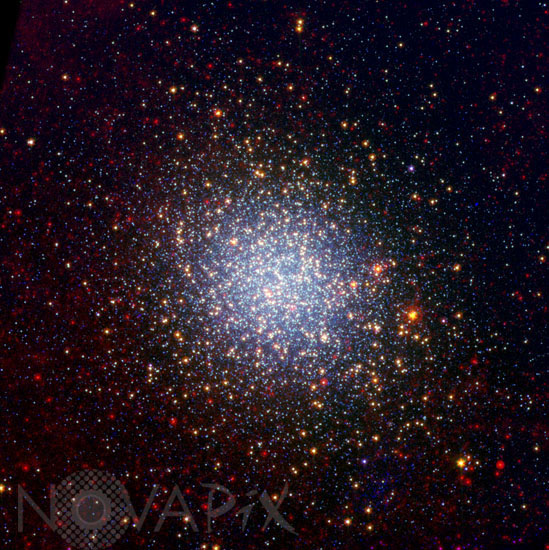Photo Agency - Astronomy - Space - Nature

NGC 5139, Omega Centauri globular cluster
author: Nasa/JPL-Caltech/Noao/Aura/Nsf/Novapix
reference: a-agb51-39010
Image Size 300 DPI: 18 * 18 cm
Omega Centauri is the biggest and brightest of the more than 150 similar objects, called globular clusters, that orbit around the outside of our Milky Way galaxy. Stargazers at southern latitudes can spot the stellar gem with the naked eye in the constellation Centaurus. While the visible-light observations highlight the cluster's millions of jam-packed stars, Spitzer's infrared eyes reveal the dustier, more evolved stars tossed throughout the region. Globular clusters are some of the oldest objects in our universe. Their stars are more than 12 billion years old, and, in most cases, formed all at once when the universe was just a toddler. Omega Centauri is unusual in that its stars are of different ages and possess varying levels of metals, or elements heavier than boron. Astronomers say this points to a different origin for Omega Centauri than other globular clusters: they think it might be the core of a dwarf galaxy that was ripped apart and absorbed by our Milky Way long ago. In this picture of Omega Centauri, the red- and yellow-colored dots represent the stars revealed by Spitzer. These are the more evolved, larger, dustier stars, called red giants. The stars colored blue are less evolved, like our own sun, and were captured by both Spitzer's infrared eyes and in visible light by the National Science Foundation's Blanco 4-meter telescope at Cerro Tololo Inter-American Observatory in Chile. Some of the red spots in the picture are distant galaxies beyond our own.
Contact : Stéphane Aubin +33-(0)9-51-26-53-76
© Novapix - All rights reserved


